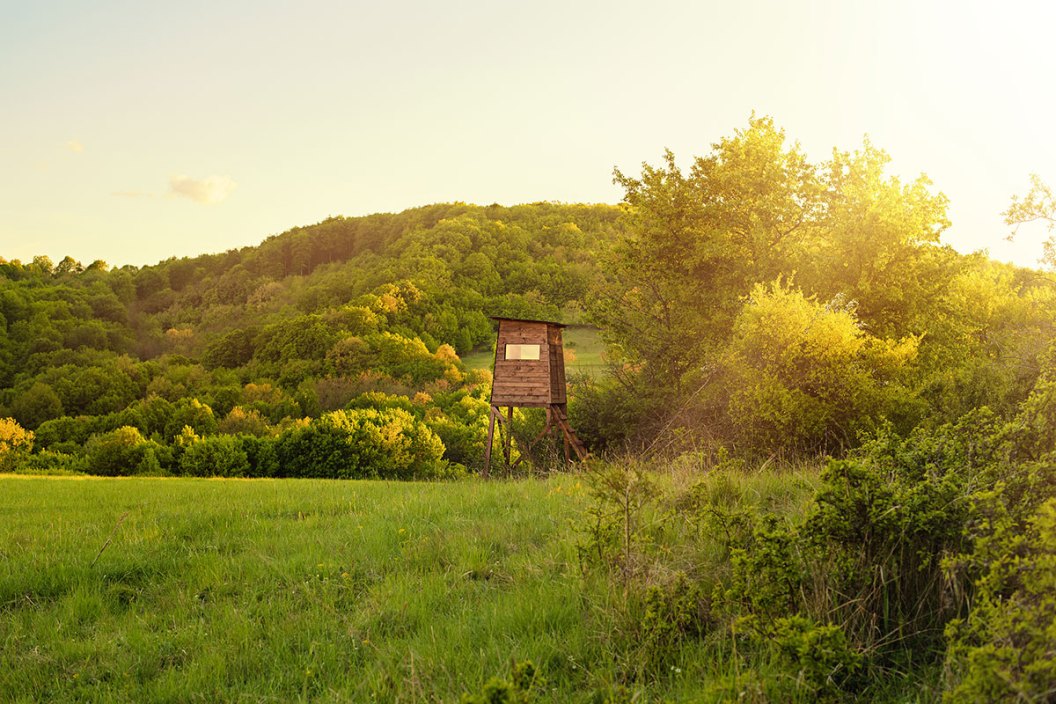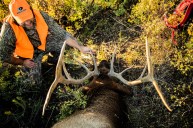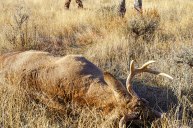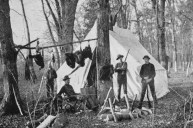How much do you know about the history of modern hunting?
As sportsmen and women we pursue many game animals for a plethora of reasons, but mainly for the nutritious meat that they can provide us with.
Wild animals have been a draw for humans since they first saw the first big game roaming the woods and fields around them. We then went from gatherers to hunters and the wild animals around us took on a new meaning for our subsistence.
Once humans realized how important animal pelts were to keeping them warm, wrapping newborns in, and even use as decoration, the word spread as to how important every species was. Since the hunting techniques of the day were limited to archery, spears, and even atlatls, it was only a matter of time until humans began to learn better hunting skills. It was that, or starve to death.
This is all to say that hunters down through the ages hunted traditionally for meat and clothing, but when modern tools like the firearm came along, everything changed dramatically, and not always for the better.
The downside: problems like poaching and poachers. The upside: terms like wildlife management and wildlife conservation became prominent.
We've said it many times and we'll keep right on saying it: hunters and outdoorsmen are at the forefront of wildlife conservation and will always be so. It's our closeness to nature and the animals that we hunt that makes us caretakers. No one can understand what it takes to create and sustain wildlife populations quite like a hunter, but just for the record, we all understand that there are many good people in the world that don't hunt but share the same philosophy.
Having said that, we've decided to take a look at how hunting in the United States has changed, improved, and what the importance of hunting means to the world around us.
Modern Hunting
So where do we start, the Middle Ages; all the way back to Neolithic times? I suppose if you would like to delve into hunting as survival you could read one of the many voluminous textbooks about man's history from his origins on the Dark Content all the way across Europe and beyond. But for our purposes we would just like to explore how we came to be the modern hunters of today.
According to the Oldest Technology, "The first firearms were created in China after the Chinese invented blackpowder in the 9th century. The earliest depiction of a gun dates back to the 12th century and the oldest existing firearm is from around 1288."
Unfortunately, as soon as black powder was invented, humans began to use it against each other in war, but that is another story. There can be no doubt that once man realized that he could knock down an animal with one of these things, modern hunting began, and we've never looked back.
From the moment settlers set foot on American shores they already had firearms in their hands that protected them and helped hunt wild game animals for sustenance. Once the early settlers made their permanent homes in North America, they began to find the raw materials that would make more and better tools to hunt with. Along with the famed American will to create the best things in the world, we suddenly went from the venerable muzzleloading rifles to some of the first repeating arms. The rest is history.
Now with wild game much easier to harvest, many of those creatures hunted for survival began to disappear from the frontier, thus creating a conservationist strategy to keep wild game populations healthy and viable for future generations. This was the beginning of the modern conservationist ideals that were brought to the forefront by high-profile leaders such as Teddy Roosevelt.
Sure, conservationism is never an easy thing to sell to everyone. WE saw the advent of hunting seasons, bag limits, and the game laws that protected them, but we also came to understand terms like threatened and endangered species and the issues that go along with them.
No one wants to see more game animals than hunters, and they are the first ones that will sacrifice some of their hunting freedom in an effort to preserve and protect that right for all time.
First Game Laws
While there are a few other local and state laws that have appeared since the time that we settled this great country, probably the first real wildlife protection law was the Lacey Act.
"The Lacey Act was introduced to Congress by Rep. John F. Lacey, an Iowa Republican, and has since undergone many amendments designed to upgrade and enhance its legal enforcement of our wildlife protection. On May 25, 1900, President William McKinley signed the Lacey Act into law, making it he first federal law protecting wildlife. Barely a year later, the Act declared its first major victory, when 48 men from Illinois were arrested for trying to ship over 22,000 ducks, quail and grouse."
Not only that, but one visit to the USFWS's Office of Law Enforcement page and you will find an updated group of species that are listed as hazardous to our great nation. The Act authorizes the Secretary of the Interior to identify any wildlife deemed to be invasive and harmful "to human beings, to the interests of agriculture, horticulture, forestry, or to wildlife or the wildlife resources of the United States" and declare them "injurious."
That way, game laws are different for species like feral hogs or Burmese pythons. Yes, they're modern day issues, but the precedent was set all the way back at the Lacey Act's passage.
First Hunting Seasons
West Virginia and Pennsylvania, just to name two, both had regulated hunting seasons adopted by their respective states beginning in the year 1869.
The code of conduct for West Virginia consisted of simple hunting dates and a list of certain bird species that could not be taken, and in 1899 the first hunting license was required. Unfortunately, as the West Virginia Explorer states, "The annually-renewed license cost $25, leading to two classes of hunters in the state - residents and well-to-do. Adjusted for inflation, that 1899 license would cost nearly $650 in today's dollars."
As Penn Live/Patriot News tells us, there was an interesting timeline that followed:
- 1683 - Hunting was permitted as a right of ownership on all lands covered by William Penn's Charter.
- 1869 - A deer season of Sept. 1-Dec. 31 was set for the first time.
- 1873 - Killing fawns in their "spotted coats" was made illegal, as well as hunting on Sunday.
- 1895 - The Pennsylvania Board of Game Commissioners was created.
- 1897 - The use of salt licks to attract deer for hunting and the running of deer with hounds were outlawed.
- 1906 - Deer were stocked in areas of Pennsylvania for the first time.
- 1907 - Antlerless deer were given complete protection.
- 1913 - The first Pennsylvania hunting license was created. The price was $1.
First Archery Season
With the men and women of the "Greatest Generation" returning home from the Second World War, many states looked into creating ample opportunities to give sportsmen a way to recreate while filling their freezers with wild game meat. This was not only for sporting men and women to safely use their favorite firearm of the day, but for those who wanted to get back to their roots and take wild game with a bow.
Both Missouri and Oklahoma created some of the first archery seasons in 1946. Lake News said that, "Sound biology coupled with much-appreciated cooperation from landowners began to bear fruit, as evidenced by a 1944 survey that placed the state's deer numbers at 15,000. Missouri deer hunting resumed that same year with a two-day bucks-only season held in 20 counties, and thus began the modern era of the state's deer hunting. From this small beginning, things only got better for deer hunters. A special archery season was first tried in 1946. Does became legal to harvest in 1951."
And the Oklahoma Wildlife Department posted:
"1946 - Participation in the deer gun season jumps to more than 7,000 (certainly due to returning World War II Vets looking for recreation). First archery season (one day) is held."
The Issue of Protecting Waterfowl
Up to this point, we've discussed state-specific laws and milestones, because many of these regulations are left up to each individual state to determine. That's why hunting laws differ across borderlines. But what about animal species that regularly cross those borders, and deserve special rules that apply to them?
Waterfowl, because of their annual migrations, are a perfect example.
The Migratory Bird Treaty Act was passed by Congress and signed by President Woodrow Wilson on July 3, 1918 and then later upheld by the U.S. Supreme Court in a 1920 ruling. In 1934 the Migratory Bird Hunting and Conservation Stamp - better known today as a Federal Duck Stamp was enacted to create monies that would go towards the the Migratory Bird Conservation Fund to purchase or lease wetlands and wildlife habitat for inclusion in the National Wildlife Refuge System.
These rules were a result of the unregulated market killing of migratory birds in the 1800s that made animals such as the Labrador duck go extinct. Today, with banding, waterfowl breeding surveys, and other forms of tracking by hunters, waterfowl have returned to their once great numbers especially after the 1948 establishment of the four Waterfowl Administrative Flyways.
Final Thoughts
When we use words like sport hunting and trophy hunting, it doesn't always sit well with every hunter. However, the history of hunting will always include these phrases.
Ever since man learned that he has dominance over the wild creatures around him, he has taken aim to see which ones he could harvest in an effort to survive (and which ones taste the best).
Now that we have much more sophisticated tools to do it with, we have learned that we can hunt wild animals with many different implements and in many remote locations that we never thought we could, and do so with successful approaches.
Not every hunter may want to take certain creatures that might not be good table fare, and not every hunter wants to sit in a deer blind and wait. But the importance of hunting dictates that many species can overrun their natural surroundings and surpass their healthy population numbers. Without hunting seasons, animals can suffer from burgeoning numbers and can be reduced to scavenging for their food, and as a result, causing more run-ins with human populations. The benefits are tenfold.
Hunting is a proud tradition of the men and women living in North America, and without them many of our prized game animals and other creatures would be much less understood, and much more at risk.
That's the part of the history of modern hunting that we should be most proud of.
Looking for a little more or even hot lunch for your hunting blind? Follow my webpage, or on Facebook and YouTube.
NEXT: 10 STATES EVERY BIRD HUNTER HAS TO VISIT ONCE
WATCH




